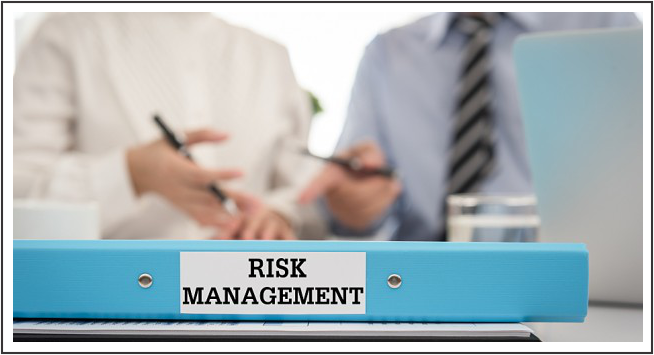RISK MANAGEMENT OF AOG PERILS: RISKS Through ‘CRESTA’ AND ‘CAT MODELS’ By ALL RISK CARRIERS
Acts of God Perils: SEISMIC and WEATHER Perils are usually made INSURABLE through REINSURABILITY as Nat-Cat Events involve enormous accumulations of Liabilities in Natural Catastrophe Prone Zones in various countries of the world.
Global Reinsurers bear almost 90% of Total Nat-Cat Insured losses through their participation in all kinds of Reinsurances.
Reinsurers have become more ‘Restrictive’ and ‘Prohibitive’ in covering Nat-Cat Risks by Proportional Reinsurance Treaties. Pricing of premiums on Proportional Treaties depends on Direct Insurers Rating and EPI is not quoted by Reinsurers who impose restrictions by various types of measures as under on Proportional Treaties Reinsured Insurers:-
 K. L. Naik
Director Naik Consultancy &
Advisors L.L.P
Mumbai
K. L. Naik
Director Naik Consultancy &
Advisors L.L.P
Mumbai
- Loss corridor or loss participation clause.
- Commission of 20% or so on premiums of AOG Perils covered.
- NIL P.C. on AOG Perils Profits.
- Capped Event Limits with Any One Event and/or Annual Aggregates in Proportional Treaties with full premiums given to Reinsurers and Insurers bearing spill overs without premiums.
- Estimated premium income may actually decline and Reinsurers introduce 90% of EPI as MinDep Premiums.
- Determine country-wise specific zones for assessment of accumulations of risks in the events of Natural Catastrophes according to geological exposures to specific Natural Hazards in a country.
- Drawing up Zonal Accumulation to assess aggregate exposures.
- Electronic Transmission of NAT-CAT Accumulation Data.
- Data to Insurers and Reinsurers out of past recorded data especially of Earthquakes and Hurricanes with revaluation of Loss Amounts.
- It may be practically difficult to implement but guidelines are created for Rating Norms for covering Earthquake Risks and Hurricane Risks in particular also including Storms, Floods etc.
- Seismological maps of various countriesare created which are helpful to insurers of these countries to assess and control exposure but the aggregate exposures keep on changing due to Climatic Changes, Demographic Changes and Urbanization Patterns.For example, Japan’s earthquake exposures are donewith about eleven zones and possible accumulation between aggregates of zone 4 & 5 or Zone 5 & 6.
- Cat models have variable forms according to exposures of risks in countries as markets of Insurance and Reinsurance.
- All Models cannot be equal.
- Without a Model, underwriters have to grope in the dark.
- Cat Models are used on guidelines to realistically understand exposures of risks underwritten by each Insurer in the same market.
- Cat Models provide a historical link to current exposures of risks.
- Modelled and Non-Modelled Nat-Cat Risks are to be combined to arrange Reinsurance Protections of each Insurers’ portfolio of class-wise risks in General Insurances.
- Cat Models are a continuous process to give the insurance and Reinsurance Industries more confidence to grow with strength, stability and adequate Reinsurance Protection.
- Risk Management Team of Insurers use a Cat Model to assess their Nat- Cat Exposures and monitor their own portfolios’ overall exposures to specific AOG Perils of their own domestic market. This helps them to decide necessary Reinsurance Protection.
- State Regulators promote use of Cat Models for Insurers to charge correct levels of rating to catastrophe prime areas insureds covering AOG Perils in Property Risks as well as CAR/EAR Risks and Motor Own Damage coverage.
- Rating agencies like S&P, AM Best use Cat Models to assess financial strength of Insurers and Reinsurers to analyze their premium rates and overall Returns on Capital cash.
- Reinsurance brokers and Reinsurers use Cat Models in structuring Reinsurance Programs for Insurers with sufficient range to cover full exposure and also fix prices for protection especially on Cat XL Treaties.
- European Unions Insurers use Cat Models to satisfy requirements to maintain capital baseunder solvency II. These are internal Cat Models developed by each Insurer.
- In the Alternative Reinsurance Technology of Securitizationof RisksthroughCat Bonds, the capital market Cat Bond investors and investment banks use Cat bonds for pricing and structuring Trigger Point of Earthquakes’ magnitude.
- Insurance industry is working with ACORD- Association for Co-operative Operations Research and Development for sharing exposure data made available through Cat-Models.
- International Society of Catastrophe Managers (ISCM) also promotes professionalism within Insurance Industry through Cat-Modelling processes.
- Cat-Models are probabilistic models to assess Loss Patterns on set of events such as what happens when Category IV windstorm occurs, what happens when magnitude of earthquake is more than 8 on Richter Scale in California or towns and cities in Japan’s specific Earthquake Zones.
 K. L. Naik
Director Naik Consultancy &
Advisors L.L.P
Mumbai
K. L. Naik
Director Naik Consultancy &
Advisors L.L.P
Mumbai 



Leave a Reply